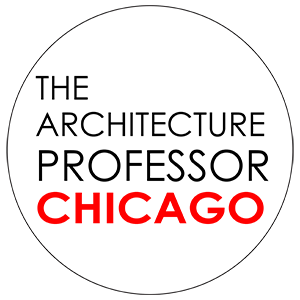Father De St. Palais’ actions had pushed the congregation deeper and deeper into debt. In addition to the construction of the cathedral, he also purchased the adjoining property, as well as property along the lakefront at the southeast corner of North Avenue and State Street for a graveyard. The city had established a cemetery outside of the city limits in the North Division in August 1835 on ten acres located near Chicago Avenue, east of Clark Street, but this had been quickly engulfed by the city’s expansion.

The parish of poor immigrants soon found itself in debt to the amount of $5000, at the unheard of interest rate of ten and fifteen per cent. Although the new building had been sufficiently enclosed (without the steeple) by Christmas of 1843 to hold its first Mass, the financial realities of the parish prevented any further work on the cathedral. Such was the condition of the Diocese of Chicago when its first bishop, William J. Quarter, arrived from New York on May 5, 1844, to take charge of his flock. He set the tone of his administration by sizing up the situation and promptly paid off the parish’s entire debt with his own and his brother’s personal funds. This truly noble act not only finally cemented the congregation, but also allowed construction of the cathedral to revive towards its completion. On October 5, 1845, Bishop Quarter consecrated St. Mary’s Cathedral, its golden cross and orb atop its spire proclaiming to all the glory of God.

By the time the cathedral was finally completed, however, there were three Protestant spires fronting the Public Square waiting to greet their Christian cousin. The First Universalist Church had been dedicated a year earlier on October 23, 1844. Located on the south side of Washington Street, next to the First Methodist Church and across the street from the First Unitarian Church, the smaller, 30′ by 45′ building seemed to have taken its inspiration directly from the Unitarians’ building. Four Doric pilasters supported a Doric pediment, the only deviation being that Ionic, not Doric, columns in antis now framed the entrance. However, the new building sported a bell tower, probably in response to the design of the cathedral.

Obviously not wanting to be overshadowed by the newer church, the Unitarians across the street added a much taller steeple during the fall of 1844, hanging Chicago’s first true fire alarm bell in the newly-completed spire on December 31, 1844, only nine weeks after the Universalists had dedicated their tower. Chicago’s “steeplechase” had commenced.

Not to be left out of the race, the Baptists had outgrown the Temple Building and thus in need of a larger building, followed suit in moving to the Public Square by purchasing the southeast corner of Washington and La Salle and commenced construction in the fall of 1844 of the First Baptist Church. Like the other Protestant congregations, it, too, chose to relocate farther to the south, away from the hustle and bustle of the river and closer to the new homes of its members. Like the Presbyterian site, this corner lot fronted the Public Square, allowing an uninterrupted view of its portico of six freestanding Ionic columns, two more than those of the cathedral’s. Not wanting to be outdone by either of the new spires in the neighborhood nor by that of the Catholics, the Baptists erected their steeple to a height of 112,’ with the addition of a clock stage which contained four clocks, one for each direction that were framed at each corner by scrolled buttresses.

Meanwhile, the Methodists, who had been responsible for initiating the southward move of the Protestant churches to Washington Street and the Public Square, had witnessed all this activity from the confines of their humble original framed building. With the Universalists’ new church next to them, and the Baptists constructing the tallest spire in town on the adjacent block, the Methodists laid the cornerstone for the new First Methodist Episcopal Church on May 8, 1845. By November, only weeks after Bishop Quarter had dedicated St. Mary’s, the Methodists had completed an even larger building in all respects, being 66′ by 95′ and seating over 1000.

Andreas stated that two designs for the church were originally submitted, one by Van Osdel and another by a Mr. Sullivan, from which the congregation took the best ideas of each for the final design. There is no doubt, however, that the congregation liked the steeple of the Baptists, for they basically copied all its features and merely stretched it another 36′ to a record 148.’ Chicago’s steeples had caught up with the height of the “skyscrapers” of the visiting merchant schooners.

FURTHER READING:
Andreas, Alfred T. History of Chicago, 3 vols. Chicago, 1884-1886. Reprint, New York: Arno Press, 1975.
Bluestone, Daniel. Constructing Chicago. New Haven: Yale University Press, 1991.
Industrial Chicago-vol. 1: The Building Interests, Chicago: Goodspeed, 1891.
Pierce, Bessie Louis. A History of Chicago-I. New York: Knopf. 1940.
(If you have any questions or suggestions, please feel free to eMail me at: thearchitectureprofessor@gmail.com)


